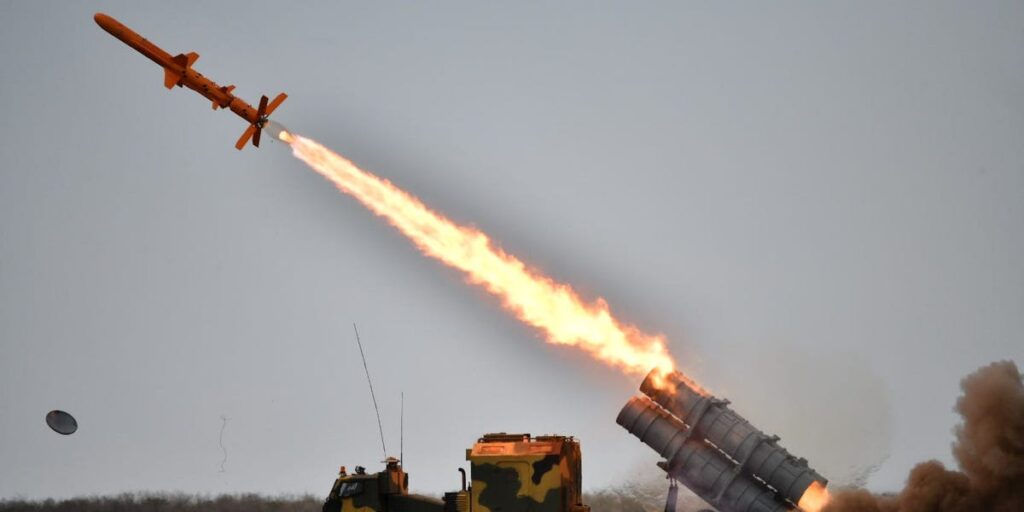Ukraine’s navy said on Monday that a Neptune anti-ship missile was used in a long-range strike against a Russian factory in Bryansk.
The nature of the strike indicates that Kyiv used a modified version — unveiled earlier this year — of the homegrown truck-launched missile. While the Neptune was originally designed to hit naval assets and warships, Ukraine tweaked the weapon to strike land targets as it sought to broaden its long-range arsenal.
“At night, our ‘Neptune’ successfully struck the Russian Karachev ‘Elektrodetal’ plant,” the Ukrainian navy wrote in a statement on Monday evening, posting several photos of a major fire in an urban area. Business Insider could not independently verify the authenticity of the images.
Karachev is a city in Bryansk, a Russian region bordering Ukraine’s northern Chernihiv region. It is around 70 miles from Ukraine’s border, but the Ukrainian General Staff said the missile strike on Monday was conducted over a range of 240 km, or about 150 miles.
The General Staff said four missiles were launched in the attack, but did not specify which types.
“Explosions and a fire were recorded on the territory of the facility,” it said in a statement on Monday. “The results of the damage are being clarified.”
According to the statement, the targeted factory specializes in manufacturing electrical parts, such as high- and low-frequency connectors, for military and aerospace components such as aircraft and antennas.
The strike comes several months after Ukraine first reported deploying its modified R-360 Neptune against a land target in March. Kyiv said it attacked an oil refinery in Tuapse at a range of more than 300 miles, calling the tweaked anti-ship missile the “Long Neptune.”
The missile is a subsonic weapon manufactured by Ukrainian defense firm Luch Design Bureau, and was originally based on the Soviet Kh-35.
Ukrainian President Volodymyr Zelenskyy said in March that the Long Neptune version featured an extended range of 620 miles, up from an initial 175 miles.
Kyiv has been expanding its homegrown range of long-range missiles as it tries to reduce reliance on Western-provided strike weapons, which have typically come with targeting restrictions.
The US, for example, has been inconsistent with support for long-range strikes, and was reported to have blocked Kyiv from hitting some Russian targets with ATACMS amid negotiation attempts earlier this year. However, President Donald Trump’s special envoy for Ukraine, Keith Kellogg, said on Sunday that the current administration is inclined to allow Ukraine to attack Russian soil with American weapons again.
Meanwhile, Ukraine has been deploying its own fixed-wing drones for strikes deep in Russian territory, more recently against dozens of oil facilities.
It unveiled a new weapon in August, the “Flamingo,” which was reported to have a range of 1,800 miles.
Read the full article here


